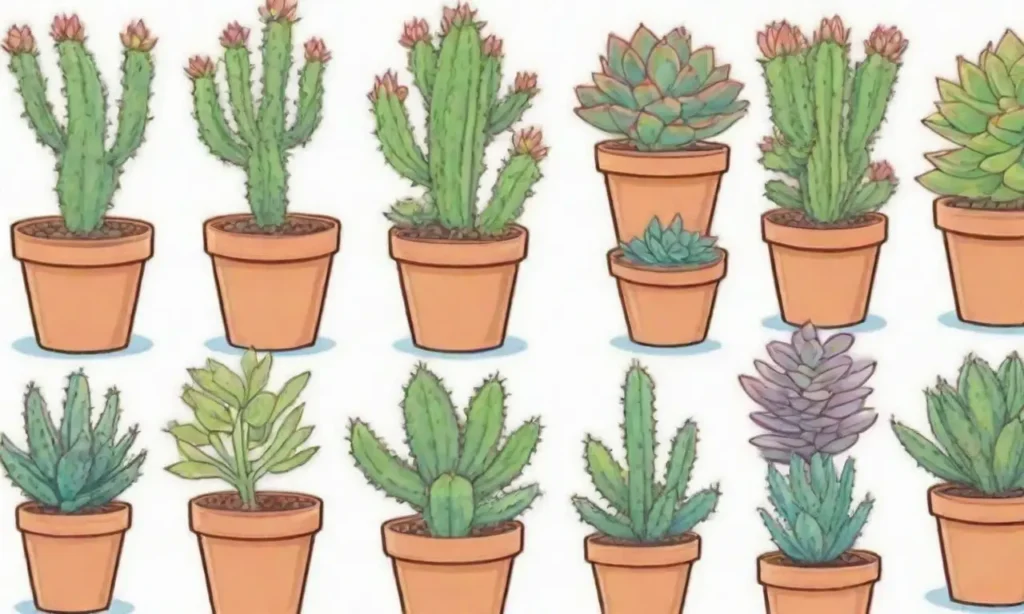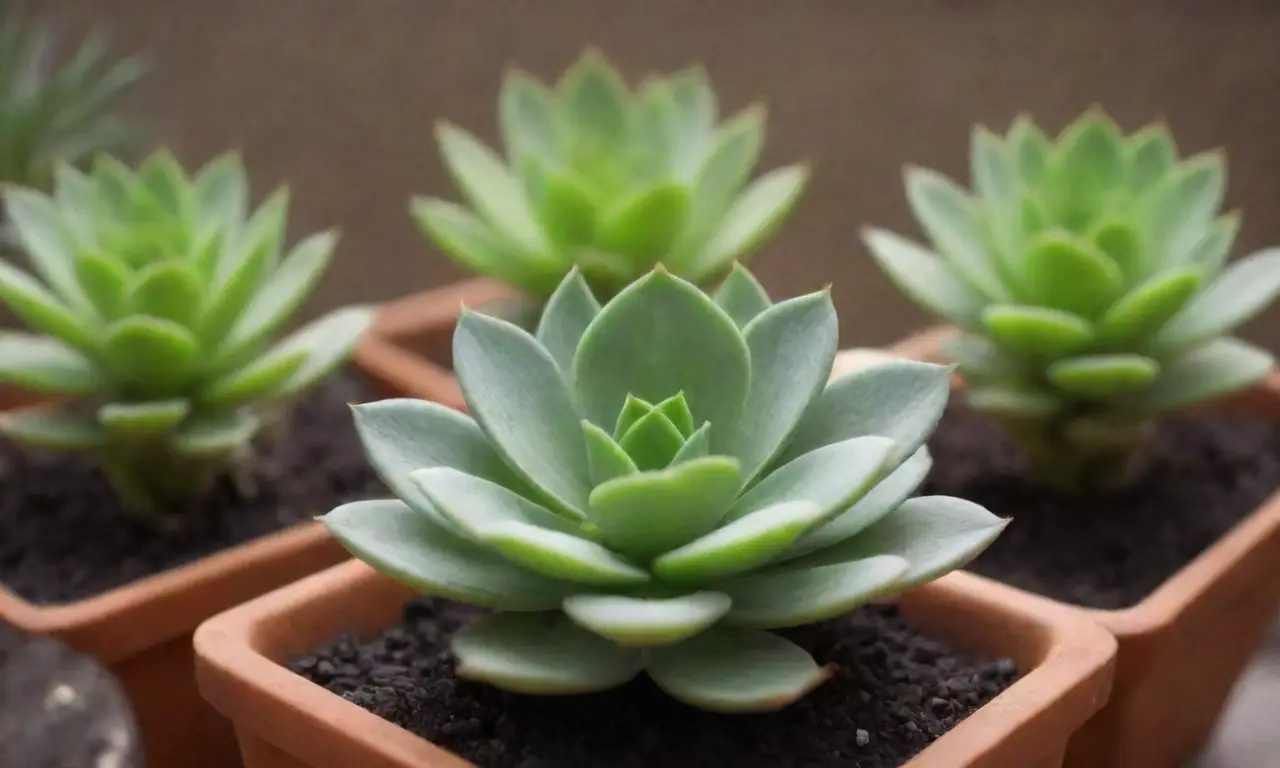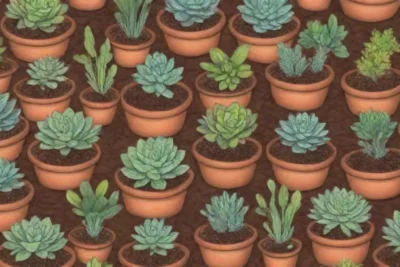
Understanding Growth Hormones in Propagation Timing for Succulents

Introduction
The world of succulents is captivating for plant enthusiasts, with their diverse shapes, colors, and unique adaptations that allow them to thrive in arid environments. One of the key factors that contributes to the success of succulent propagation is the intricate role of growth hormones, also known as plant hormones or phytohormones. These natural chemicals guide various growth processes in plants, making understanding their function critical for anyone looking to cultivate healthy and vigorous succulents.
In this article, we will delve deeply into the realm of growth hormones, their significance in the propagation of succulents, and how they can be harnessed for optimal timing. We'll discuss the specific types of growth hormones, their effects on plant development, the ideal conditions for propagation, and practical tips to enhance your succulent propagation techniques. Whether you are a seasoned gardener or a novice, this guide aims to equip you with the knowledge you need to successfully propagate succulents using growth hormones.
Understanding Growth Hormones
Growth hormones in plants are substances that regulate various physiological processes such as cell division, elongation, and differentiation. They are produced in specific tissues and can be transported to different parts of the plant to initiate growth responses. The five primary classes of growth hormones include auxins, cytokinins, gibberellins, abscisic acid, and ethylene. Each of these hormones plays a distinct role in the life cycle of plants, making their understanding vital for anyone interested in propagation.
Auxins: The Growth Stimulators
Auxins are primarily responsible for promoting cell elongation in stems and roots, making them one of the most critical hormones for propagation. When it comes to succulent propagation, especially through leaf cuttings or stem cuttings, auxins are at the forefront. They stimulate the formation of root primordia, which are the first steps in root development. This hormone's presence can significantly enhance the chances of successful rooting, enabling the newly propagated succulent to establish itself more effectively.
The auxin that is often used in propagation is indole-3-butyric acid (IBA). Many gardeners utilize products that contain IBA to accelerate rooting in cuttings. When applied to the cut surface of a succulent cutting, IBA encourages the plant cells to undergo division and elongation, eventually forming new roots. However, it's essential to note that auxins should be used judiciously; excessive application can lead to detrimental side effects, such as stunted growth or abnormal root formation.
Cytokinins: A Balance in Growth
Cytokinins are another vital group of growth hormones that play a pivotal role in plant propagation. These hormones promote cell division and are crucial for the growth of lateral buds and roots. In the context of succulent propagation, cytokinins can help create a more robust plant system by enforcing a balanced growth between roots and shoots. For effective propagation, maintaining this balance is essential to ensure that the new plant grows well above and below ground.
Incorporating cytokinins into propagation strategies can be particularly beneficial when dealing with tissue culture methods or when aiming to boost the vitality of weakened or stressed succulents. Products that contain cytokinins can be applied to the soil or as a foliar spray, promoting an even distribution of resources throughout the plant, helping to mitigate stress during propagation.
 Evaluating Soil Conditions for Proper Succulent Propagation Timing
Evaluating Soil Conditions for Proper Succulent Propagation TimingGibberellins: Growth Acceleration
Gibberellins are hormones that promote stem elongation, seed germination, and flowering. While they are less commonly discussed in the context of succulents, they can actually facilitate rapid growth in younger, actively growing plants. For succulent propagation, gibberellins can be employed when engaging in strategies that necessitate swift growth for newly rooted cuttings. This approach is particularly useful for gardeners looking to establish new plants quickly, especially during the growing season when light and temperatures are optimal.
If gardeners want to encourage their newly propagated succulents to reach a certain size in a shorter amount of time, gibberellins can serve as an effective tool. However, it’s imperative to use them in moderation, as excessive application can lead to uncontrolled elongation, resulting in leggy, weak plants.
Factors Influencing Hormonal Action in Succulent Propagation
Environmental Conditions
The effectiveness of growth hormones heavily relies on environmental conditions such as light, temperature, and humidity. Succulents thrive in bright, indirect sunlight, and this light is a trigger for hormone synthesis in plants. Adequate light conditions can bolster the production of auxins and cytokinins, while also supporting photosynthesis, providing the energy needed for growth processes.
Temperature is another crucial factor. Warmer conditions typically stimulate metabolic processes, increasing the production and effectiveness of growth hormones. However, extreme temperatures can stress plants and negatively impact hormone action. Ideal temperatures for succulent propagation often hover around 70°F to 80°F (21°C to 27°C). On the other hand, humidity levels should be monitored closely; high humidity could lead to fungal issues while very low humidity may prevent effective respiration necessary for growth hormone function.
Timing of Propagation
The timing of propagation also plays a vital role in the success of utilizing growth hormones effectively. The growing season, which usually spans from spring to early summer, is often the optimal time for propagation. During this period, succulents are naturally primed for growth, enabling the hormones to work efficiently. Conversely, attempting to propagate during dormancy may yield poor results as the plant's metabolic processes slow, and hormone production diminishes.
Furthermore, different succulent varieties may require specific propagation timings. Observing the natural growth cycles of the succulent species you intend to propagate can enhance your success rate. Propagating at the right moment, especially during the plant's most active growth phase, will allow you to capitalize on hormone action effectively.
Tips for Effective Succulent Propagation

 Fall Propagation Strategies: Timing for Cooler Months
Fall Propagation Strategies: Timing for Cooler MonthsUse of Growth Hormone Products
One effective strategy to improve the success of succulent propagation is the use of commercial growth hormone products available in garden centers. These products, often formulated with auxins or combinations of different hormones, can provide your cuttings with a significant advantage. Applying a rooting hormone at the base of the cutting can enhance root growth, establishing the new plants faster and more reliably.
When using rooting hormones, be sure to soak the cut end of the succulent cutting adequately and avoid applying hormone to non-cut surfaces, as this could lead to problems in other parts of the plant. Always follow the instructions provided on the product for the best results.
Propagation Media Considerations
The choice of propagation media significantly affects the ability of growth hormones to work effectively. A well-draining potting mix is essential when propagating succulents, as too much moisture can lead to rot, especially when rooting hormones have stimulated rapid growth. A mix that combines elements such as cactus soil, perlite, or sand offers excellent drainage while providing the necessary support for the young plant.
Additionally, considering the pH of the propagation media can help optimize hormone activity. Most succulents thrive in slightly acidic to neutral soil (pH 6.0 to 7.0). Testing the pH and amending as necessary can create an environment that supports better rooting and growth.
Observation and Adaptation
Successful succulent propagation requires close observation and an understanding of how your specific plants respond to various conditions. Regularly checking moisture levels, light exposure, and growth can inform adjustments and interventions as needed. For instance, if roots are developing slower than anticipated, increasing humidity around the cutting can accelerate rooting by reducing transpiration stress.
Equally important is documenting your propagation techniques, as reflection often leads to improved methods over time. Noting the timing, types of hormones used, environmental conditions, and plant response can provide insights that optimize future propagation attempts.
Conclusion
Understanding the intricacies of growth hormones in succulent propagation opens up a world of possibilities for gardeners seeking to enhance their propagation success. By recognizing the roles of auxins, cytokinins, gibberellins, and the impact of environmental conditions, you can significantly improve your outcomes. Propagation is not just about the act of planting a cutting; it’s a nuanced process that requires knowledge, patience, and a willingness to experiment with methods.
 The Impact of Fertilization Timing on Succulent Propagation
The Impact of Fertilization Timing on Succulent PropagationIncorporating practical tips such as using growth hormone products, choosing the right propagation media, and consistently observing your plants will lead to more robust succulents capable of thriving in your garden collection. Remember, successful propagation ultimately comes down to understanding your plants, their environment, and how to harness the power of growth hormones effectively.
Happy propagating, and may your journey into the world of succulents be as enjoyable as it is rewarding!
If you want to read more articles similar to Understanding Growth Hormones in Propagation Timing for Succulents, you can visit the Propagation Timing category.



You Must Read